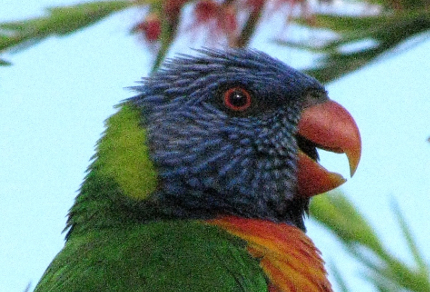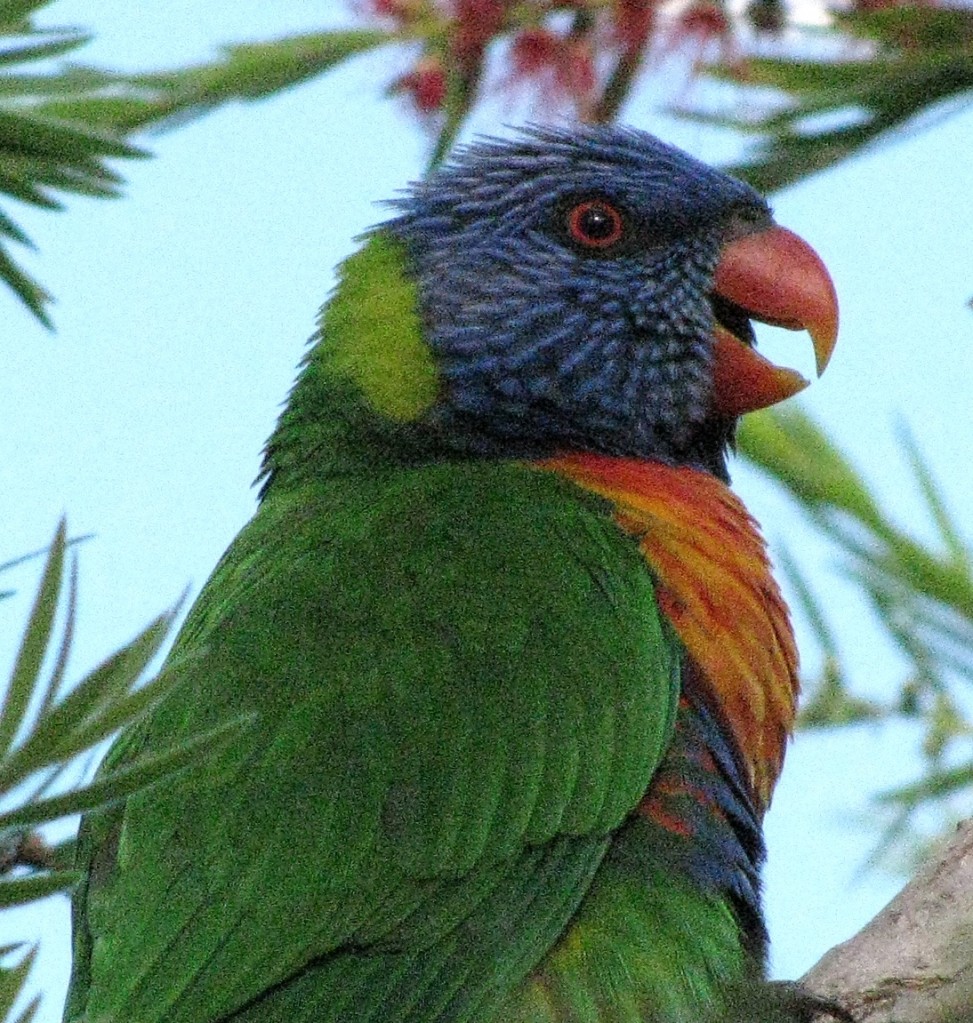
Rainbow Lorikeet (© Magi Nams)
Like a loud blast of good rock music, the raunchy, penetrating guffaws of laughing kookaburras enticed me outdoors into a new autumn morn. I tucked a camera into my pocket and slung my binoculars around my neck, then strolled alongside the Townsville Golf Course and into Bicentennial Park, identifying all the birds I could.
A rainbow lorikeet feeding in a small tree possessing weeping, narrow-leaved branches and spikes of red, tufted flowers granted me some excellent photographic opportunities – when the bird wasn’t thrashing through the leaves or gyrating in pursuit of nectar. No ballet dancer, the lorikeet scrambled noisily among the branches, muttering raucous squawks as it maneuvered its vividly-feathered body into an assortment of positions in order to reach blossoms. Clinging to branches with its feet having two toes pointing forward and two pointing backward, it hung upside down or propped itself on two branches and twisted its head back over its shoulder to lap nectar and pollen with its brush-tipped tongue.
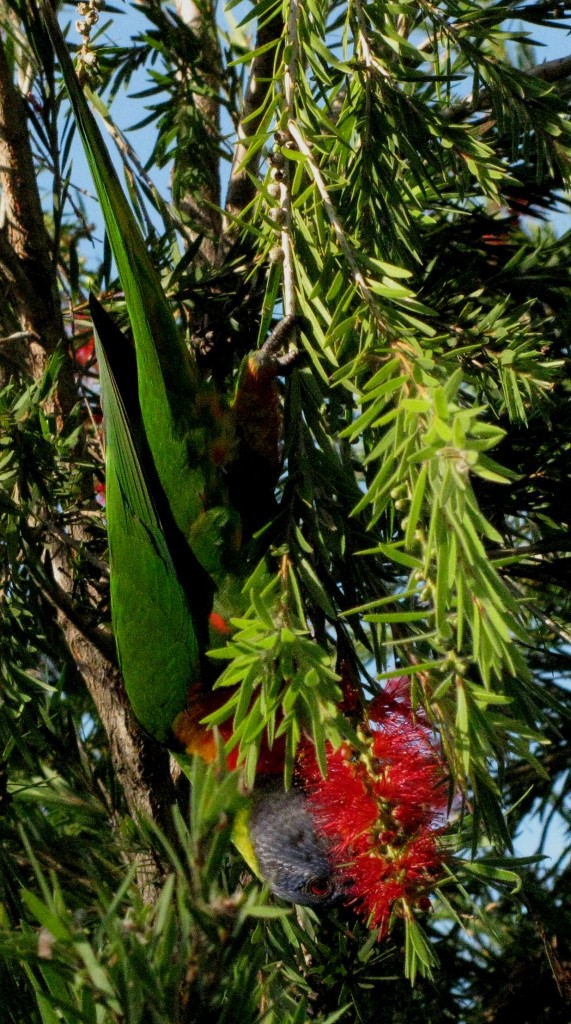
Rainbow Lorikeet Feeding (© Magi Nams)
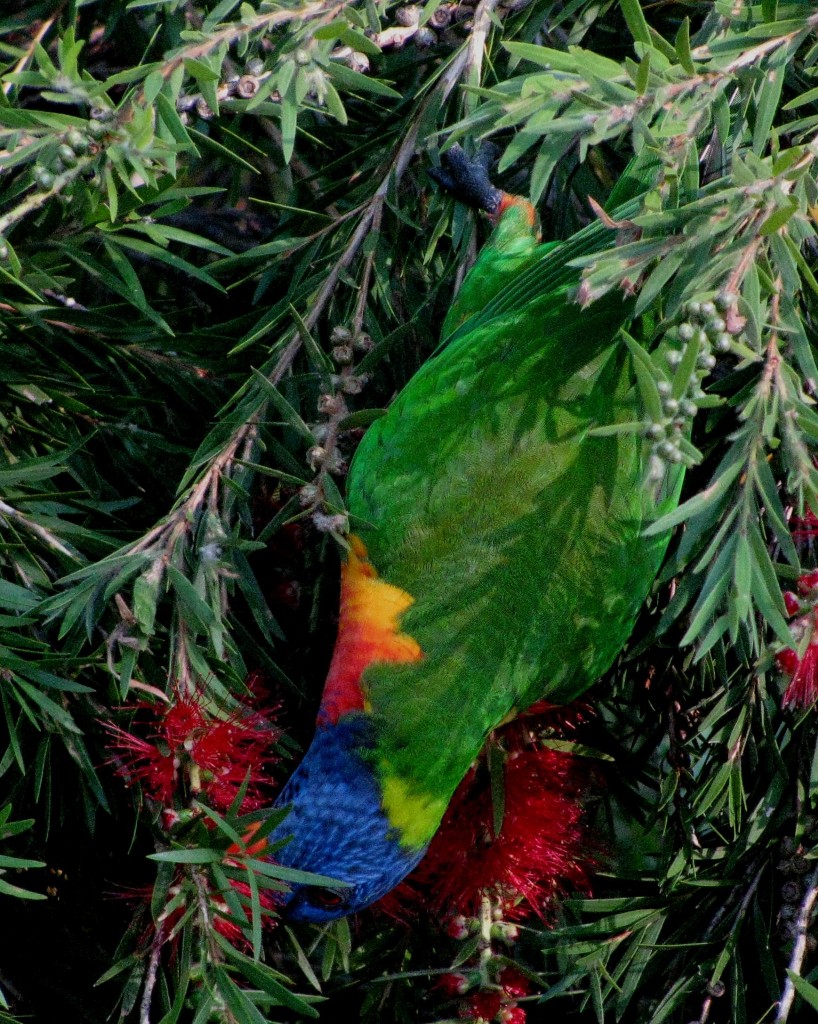
Rainbow Lorikeet Feeding from Flowers (© Magi Nams)
When seen alone, rainbow lorikeets are so vividly coloured, they are unmistakeable; yet, when they forage in trees with red, orange, or yellow blossoms, it’s surprisingly difficult to distinguish them from the vegetation, although their incessant, fussing shrieks always give away their rough position. This lorikeet’s brilliant green back and tail blended in with the tree leaves, while its blue head echoed the shades of shadow and sky, and its scarlet beak and red-orange throat could be likened to the hue of the flowers from which it fed. I snapped a dozen photos, trying to capture the lorikeet’s antics during rare moments of stillness in its otherwise hyperactive foraging. Like all lorikeets, rainbows only feed on nectar and pollen, and as a result, have a simplified digestive system that fast-tracks their food into very apparent energy.1
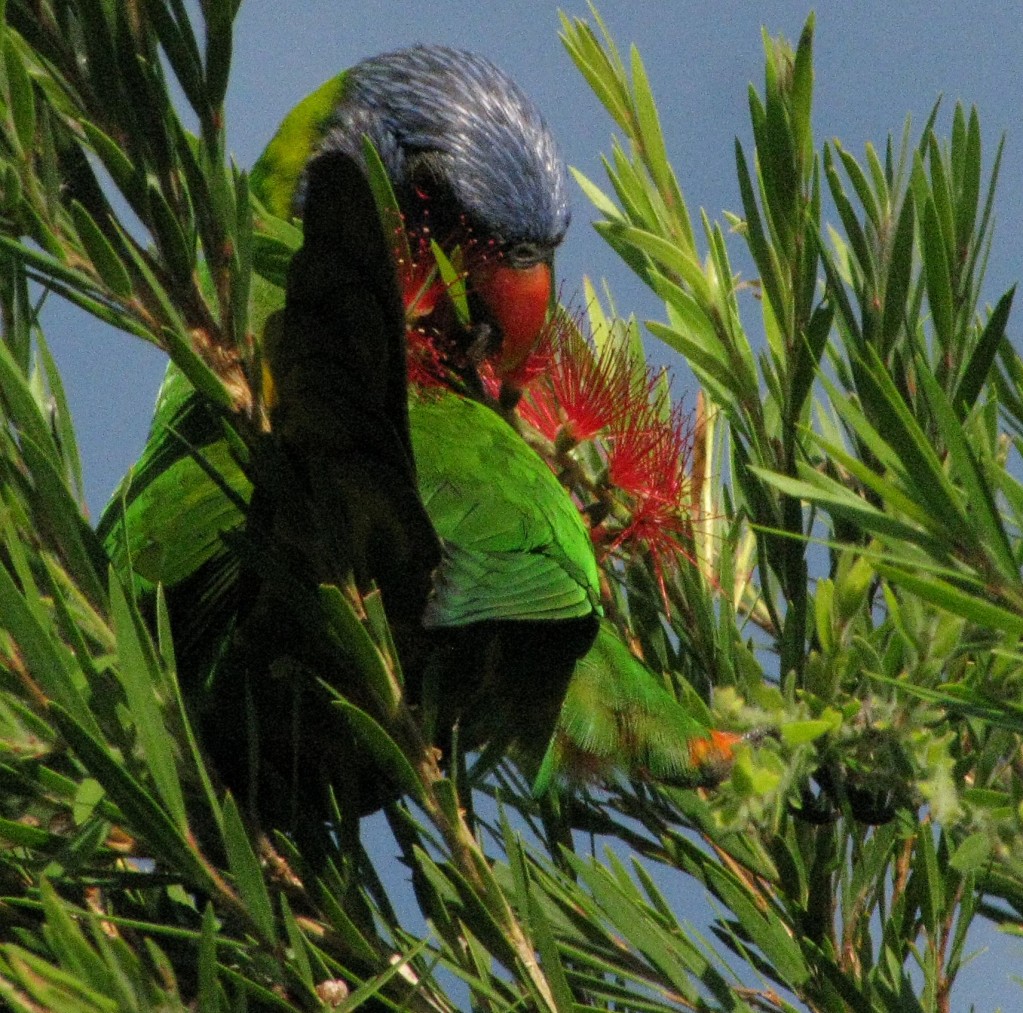
Rainbow Lorikeet Foraging in Tree Blossoms (© Magi Nams)
Rainbow lorikeets are one of the species I see or hear nearly every time I go birding within the vicinity of our home. To date, I’ve recorded 92 species within the strip of Ross River Parkway green space that includes Bicentennial Park, two edges of the Townsville Golf Course, and the Parkway west as far as Palmetum Park. Each time I go birding in this strip, I see 20 to 25 species of birds, and often, I observe many of the same bird species from day to day. The most common are mynas, magpie-larks, peaceful doves, rainbow lorikeets, and masked lapwings. Others, such as Australian white ibises, Australian magpies, blue-faced honeyeaters, and rainbow bee-eaters, are very common, but I don’t necessarily see them every day. Birds that I see frequently, but less often than those listed above, include sulphur-crested cockatoos, great bowerbirds, yellow-throated miners, white-gaped honeyeaters, and laughing and blue-winged kookaburras.
On the opposite end of the spectrum are birds I’ve encountered rarely, such as yellow-bellied sunbirds, mistletoebirds, rainbirds, and dollarbirds. Plus, I still encounter species I’ve never seen before, like the handsome male rufous whistler, with his grey suit of feathers accented by a white chin, black V outlining his throat, and pale cinnamon belly, that I spotted singing in a young tree beside the Ross River this morning. Some of my sightings have been seasonal in nature; for example, the flocks of nagging little corellas that perched like long, white parrot flowers in the golf course trees during January, but which I haven’t sighted for months.
So, I continue to observe my good acquaintances, hoping to gain greater understanding of their habits, but always I look for new species. As with all bird surveys in a given area, the number of new species sighted is highest during early surveys and decreases during later ones, until huge amounts of time and effort are required to increase species lists. But I’m okay on that one. I’ve got the time – a year in total – to drink in the spectacular avian beauty of this dry tropical city.
Today’s birds: laughing kookaburras, rainbow lorikeet, magpie-larks, mynas, yellow honeyeaters, masked lapwings, green figbirds, yellow-throated miner, white-breasted woodswallows, peaceful doves, spangled drongo, sulphur-crested cockatoos, varied triller, rainbow bee-eaters, yellow-bellied sunbird, *rufous whistler, anhinga, whistling kite, great bowerbird, pheasant coucal, white-gaped honeyeater, brown honeyeater. (*denotes lifelist sighting)
Reference:
1. Graham Pizzy and Frank Knight. The Field Guide to the Birds of Australia. 1997. Angus & Robertson, Sydney. p. 532.

